Farm to Tray: Students Grow Fresh Produce
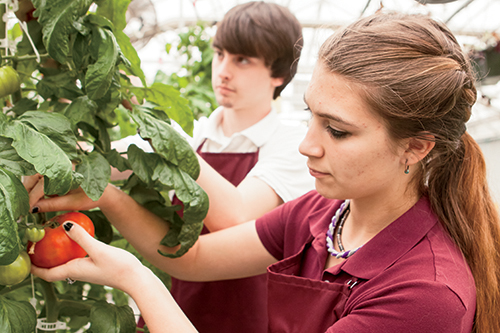
Limp lettuce. Tasteless tomatoes. Curdled cucumbers. If these remind you of bland schoolroom lunches from yesteryear, picture instead the colorful and flavorful fresh produce that entices students into healthful choices at Liberty Technology Magnet High School. Eating healthy is the norm at this Jackson school.
Homegrown Nutrition
Sydney Davis sounds like she might be a co-op partner or a farmer when she talks produce. In a sense, that’s exactly what the high school junior and her fellow agricultural-track students are.
“What we’re doing is taking our nutrition specialties at this school and supplying them to other schools,” Davis says of the school’s Farm to Tray program. The program is part of the U.S. Department of Agriculture’s Farm to School initiative, which calls for schools to serve locally grown food as much as possible. The fresher the food, the higher the nutritional wallop.
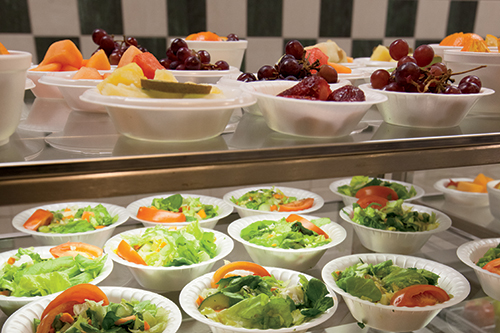
“It dawned on me that the best local produce available was right here at one of our schools,” recalls Susan Johnson, school nutrition director for the Jackson-Madison County School System. So she approached Liberty agriculture teacher Teresa Crouse about a partnership. Crouse readily agreed.
At Liberty, food bars offer individual side salads, as well as a separate make-your-own salad bar and a sandwich bar. All feature the school’s own produce. Display boards proudly proclaim the role of the school’s lettuce, tomatoes and cucumbers on the menu.
“A lot of times if you’re getting lettuce, you’re getting it out west,” says Crouse. “It has to be trucked in. But we’re able to harvest and immediately take our produce to the cafeteria, so you’re getting more nutritional value.”
The same is true for the other six Jackson-Monroe County schools serving Liberty produce.
“We’re just trying to make Jackson a healthier place to live,” Crouse adds.
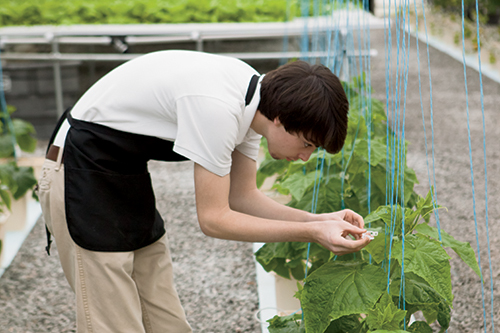
Greenhouse Effect
In 2013, Farm to Tray won the USDA’s Best Practice Award. Plans call to expand the self-sustaining program to nourish students at more of the area’s 27 schools.
“To increase production, we need another greenhouse,” says Liberty Principal June Murry.
Currently the school has three, focusing on traditional, hydroponic and aquaculture production. Each greenhouse spans almost 3,000 square feet, with push-button temperature control and interior shade.
“Food safety can be a challenge,” says Johnson, but Liberty’s greenhouses are pristine. Students are taught and follow Good Agricultural Practices.
Under Crouse’s guidance, the students essentially are farmers, handling the myriad of tasks producers must complete to succeed. The latest crop numbers totaled 4,222 heads of Bibb lettuce, 573 pounds of cucumbers and 695 pounds of tomatoes. They also raise koi and tilapia, as well as seasonal products, such as poinsettias.
“We’re integrating our math and science and putting it into practice,” Crouse says. “We do a lot of water chemistry and water quality testing. Students learn how to monitor such things as pH levels and electrical conductivity.”
The hands-on approach helps students learn.
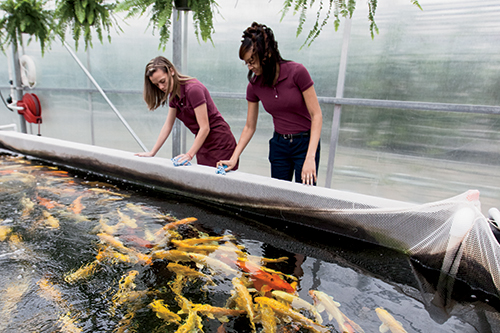
“When they’re talking about chemistry in a classroom,” Davis says, “it’s hard to understand, because you can’t relate it to anything.” But dealing with real-world problems, such as nutrient deficiencies, makes these academic subjects more relevant.
The greenhouses operate like a business. Each day, students log in then sign off on that day’s jobs, which are based on crop needs. Plants are numbered and assigned.
“If I wasn’t here for three days, these students could come in and still run everything,” Crouse says with confidence.
Murry agrees. “Ownership for learning is a big success for our students in Farm to Tray,” she says.
The students also take pride in letting others know about their school’s program. When delivering nutritional lessons at elementary schools, for instance, Liberty students bring their lettuce, tomatoes and cucumbers for an interactive show-and-tell. Then the students in the audience build and eat the salads after the talk, eager to win approval from the teenagers.
Crouse believes the outreach will have a long-term effect.
“At the same time that our students are conducting nutrition lessons with elementary students, they’re talking to them about growing their own vegetables,” she says. “Being able to make an impact on future generations is huge to me.”
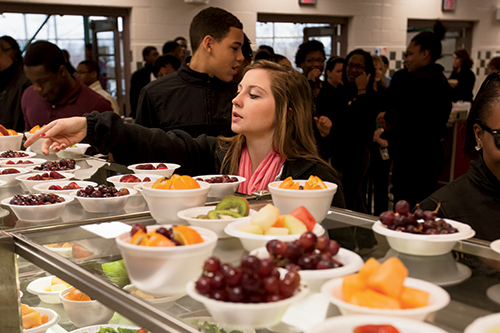
That means a lot to Murry as well.
“The program allows students to connect not only with their core curriculum courses but it helps them connect to the community.”
She cites the presentations these poised young men and women make.
“When they step into an arena, a metamorphosis occurs,” Murry says. “They turn into these speakers who speak with such confidence and so much inflection in their voices. For a few minutes, an audience is mesmerized.”
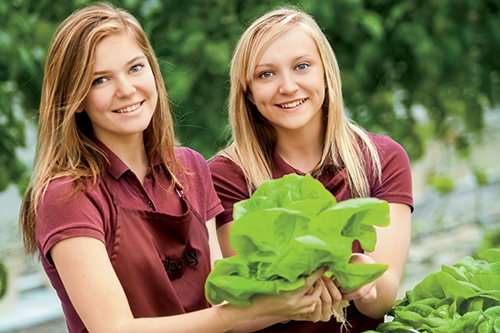
Their involvement with the program also expands their career possibilities. “From this experience,” Murry says, “students understand that with an ag background they can go into many different careers, from journalism to business to marketing.”
For her part, Davis relishes every aspect of her connection to the Farm to Tray program. “I love agriculture,” says the teenager, who was raised on a farm. Now, like her father and grandfather before her, she too recognizes the joy of growing food through one’s own effort and thought. Pride coloring her voice, she says, “We students are responsible for the whole process.”
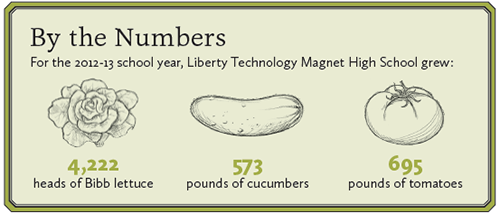






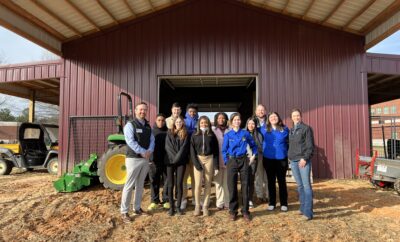








This is a great story. I am looking to do this exact program in our District. Thank you for sharing!